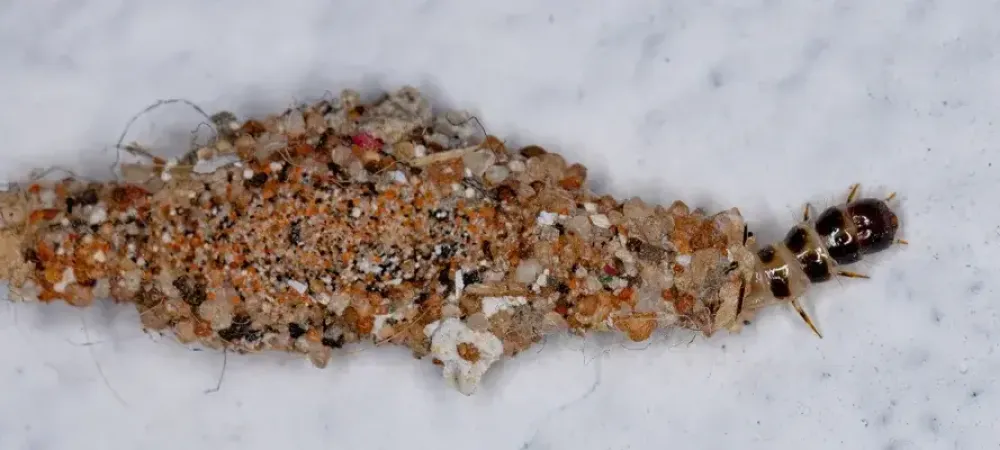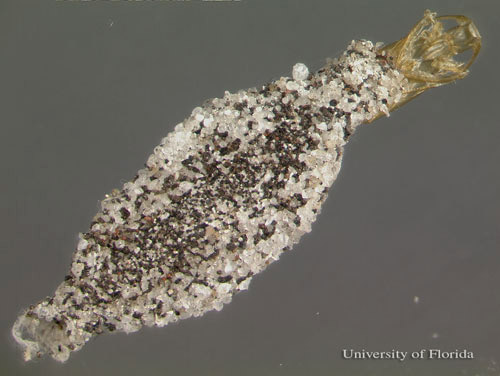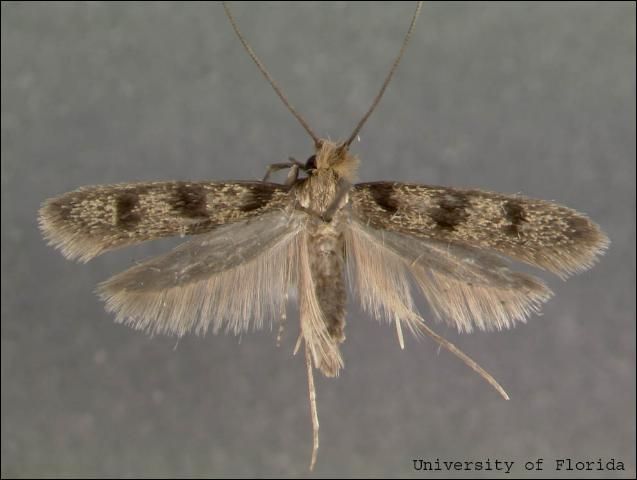Your Ultimate Guide to Plaster Bagworms in Florida

Florida homeowners often enjoy the state’s sunshine and warmth, but these ideal conditions can also attract a variety of pests. Among them is the plaster bagworm, also known as the household casebearer, a common household invader that many people are unfamiliar with until they notice its distinctive cases attached to walls or ceilings. While they’re not dangerous to humans, understanding these pests can help you protect your home. This guide provides a detailed overview of plaster bagworms, their habits, and what you can do to manage them effectively.
Key Takeaways:
- What Are They? Plaster bagworms are small case-bearing moths that create distinctive silk bags, making them unique household pests in Florida's warm climate.
- Habitat Hotspot Florida's subtropical environment provides the perfect breeding ground for these pests, with high humidity and warm temperatures accelerating their reproduction.
- Not Dangerous, But Destructive While plaster bagworms don't harm humans or pets, they can cause significant damage to household materials like fabrics, insulation, and structural elements.
- Quick Reproduction These pests complete their life cycle in approximately three months, allowing them to spread rapidly in favorable conditions.
- Early Detection Matters Recognizing the signs of a plaster bagworm infestation early can help prevent extensive damage to your home and reduce the complexity of elimination.
Jump To A Section:
What Are Plaster Bagworms?
Plaster bagworms (Phereoeca Uterella) are small pests that belong to the family of case-bearing moths. They’re most noticeable due to the distinctive, portable cases they construct and carry around for protection. These pests are more common in warm, humid environments, making Florida homes an ideal habitat. Let’s dive deeper into their characteristics.
Appearance
Plaster bagworms are small, with adult moths measuring about 1/2 inch in length. The larval stage, however, is what most homeowners recognize. The larvae construct a case from silk, dirt, and bits of their surroundings, such as lint or wall material, giving it a grayish or beige color. These cases are spindle-shaped and can grow up to 3/4 inch in length. When mature, adult bagworms resemble small gray moths with narrow wings and a slightly hairy body.
Life Cycle
The plaster bagworm’s life cycle has four distinct stages: egg, larva, pupa, and adult. Each stage plays a crucial role in their development and survival:
| Stage | Description | Duration |
| Egg Stage | Female moths can lay over 200 eggs within a week, laying them in secluded, protected areas such as crevices, cracks, or hidden corners of walls and ceilings. The eggs are tiny, oval-shaped, and white or pale cream in color, often blending into their surroundings. Depending on environmental conditions, the eggs hatch within a few days to a few weeks. | A few days to a few weeks (depends on environment) |
| Larval Stage | Once hatched, the larvae are small and pale, resembling tiny caterpillars. They immediately begin constructing their protective cases from silk and incorporated materials like lint, dust, or other debris. The case appears gray or beige and resembles a small, flattened cocoon. As they grow, the larvae periodically enlarge their cases to accommodate their increasing size, molting 5-6 times over 2-3 months,. During this stage, the larvae actively feed on organic materials such as spiderwebs, wool, and natural fibers. | Several weeks to a few months (depends on humidity and food) |
| Pupal Stage | When the larvae have matured, they enter the pupal stage. They seal themselves inside their cases with silk and undergo transformation into adult moths. The pupae are immobile and appear as thicker, darker versions of the larval cases. The pupal case may be attached to walls, ceilings, or furniture during this period. | 1 to 2 weeks |
| Adult Stage | Adult plaster bagworms emerge from their cases as small, gray moths with slender, elongated wings and a slightly hairy appearance. Their bodies are delicate, with males having feathery antennae for detecting female pheromones. The primary purpose of adults is reproduction. During this time, males actively search for females to mate, and the cycle begins anew with the laying of eggs. | A few days to a week |
Diet
Plaster bagworms are primarily scavengers. Their detritivore diet consists of a variety of organic materials, including plant debris and other fibrous substances:
- Dried leaves
- Twigs
- Bark
- Spiderwebs
- Wool
- Hair
- Lint
- Fabric
- Dust
- Plaster
- Insulation
- And more
While they can consume natural fibers from clothing or furniture, their diet is relatively limited compared to other household pests like moths.
Habitat
These pests thrive in warm, humid environments, which makes Florida’s climate ideal. Indoors, they’re often found in garages, basements, and near air vents, where humidity levels are higher. Plaster bagworms frequently attach their cases to walls, ceilings, or furniture. Outdoors, they’re typically found under eaves, on tree trunks, or among spiderwebs.
Behavior
Plaster bagworms are relatively sedentary. The larvae remain within their cases, which they carry as they move slowly in search of food. They’re not aggressive and pose no direct threat to humans or pets. Adult moths are nocturnal and may be attracted to light, but they’re not particularly active.
Damage
Although plaster bagworms don’t bite or spread disease, they can cause damage to household items. Their larvae feed on natural fibers, making fabrics, carpets, and even wallpaper potential targets. Heavy infestations can lead to noticeable damage over time, particularly in areas where dust and debris accumulate. Additionally, their unsightly cases can mar the appearance of walls and ceilings.

Why Are Plaster Bagworms Common in Florida?
The subtropical climate in Florida provides an ideal environment for plaster bagworms, who thrive in warm temperatures. Experts suspect that the infestation began when eggs were inadvertently introduced as shipping cargo from somewhere outside of Florida. The typical life cycle of plaster bagworms is completed in roughly three months, allowing them to quickly reproduce and spread across the state with ease from one favorable environment to another.
When Are Bagworms Active in Florida?
Common bagworm larvae usually emerge in late spring and early summer and may disperse through the air using silk threads; some may stay on their host plant if food is available. The caterpillar stage of the Plaster Bagworm could take up to four months, depending on temperature and food source. Adult moths are typically seen from May to October but can sometimes be seen from January to November.
What Attracts Plaster Bagworms to Your House?
Plaster bagworms are drawn to homes due to a combination of environmental factors and food sources. Here are the main things that attract them:
- High Humidity: Plaster bagworms thrive in moist environments. Humid areas, such as kitchens, bathrooms, basements, and laundry rooms, are prime targets.
- Moisture-Damaged Wood: Any wood in your home that is damaged or decaying due to moisture is an attractive spot for bagworms. This includes wood beams, structural materials, and wooden furniture.
- Insulation Materials: Bagworms often infest areas where insulation materials are present, especially if they are damp or deteriorating. They may feed on and burrow into these materials.
- Organic Matter: Organic debris like rotting wood, leaves, or other decaying plant material provides both a food source and a shelter for bagworms.
- Warm, Sheltered Spaces: Bagworms seek out warm, sheltered environments to build their silk bags. Attics, crawl spaces, and other hidden areas with mild temperatures are ideal locations for them to nest.
- Entry Points: Bagworms can enter through cracks or gaps in windows, doors, and walls. They are also attracted to poorly sealed roof spaces or vents, which can let in moisture.
By understanding what attracts plaster bagworms to your home, you can take steps to reduce the factors that make your house appealing to these pests.
Common Signs of a Plaster Bagworm Infestation
Identifying a plaster bagworm infestation early can prevent significant damage to your home. Here are some common signs that you may have an infestation:
- Silk Bags: The most obvious sign of plaster bagworms is the appearance of small, cylindrical silk bags that they construct around themselves. These bags are usually attached to surfaces such as walls, ceilings, or wooden structures.
- Damage to Structural Materials: Bagworms feed on materials like plaster, wood, and insulation, so visible damage to these areas—such as small holes or signs of gnawing—can indicate an infestation.
- Visible Larvae or Caterpillars: If you spot small, caterpillar-like larvae with silk bags in your home, it's a clear indication that plaster bagworms have taken up residence.
- Presence of Shed Skins: As bagworm larvae grow, they shed their skins inside their protective bags. Finding these skins near bags can be another indication of an ongoing infestation.

How to Prevent Plaster Bagworms
Prevention is key to avoiding the hassle of a plaster bagworm infestation. Here are several steps homeowners can take:
- Control Humidity: Since plaster bagworms thrive in humid conditions, maintaining a dry environment inside your home is crucial. Consider using dehumidifiers or air conditioners to reduce moisture in rooms that tend to stay damp, such as basements, attics, and bathrooms.
- Regular Cleaning: Consistently cleaning your home can help prevent future infestations. Vacuum areas where bagworms have been spotted, especially in corners, cracks, and crevices. Regularly wipe down surfaces to remove eggs, larvae, or webbing left behind by the pests.
- Seal Cracks and Gaps: Bagworms often enter homes through cracks, gaps, or holes in windows, doors, and walls. Regularly inspect and seal any openings around windows, doors, and foundations to block potential entry points.
- Remove Organic Matter: Keeping areas free of decaying materials, such as old wood or insulation, reduces the likelihood of attracting plaster bagworms. Make sure that attics, basements, and crawl spaces are kept clean and free of unnecessary clutter.
- Maintain Roofing and Gutters: Ensure that your roofing, gutters, and downspouts are in good condition. A well-maintained roof can prevent moisture buildup in areas that could attract plaster bagworms.
How to Get Rid of Plaster Bagworms
If you discover an infestation of plaster bagworms in your home, it's important to take action promptly to eliminate them and prevent further damage. Here's how:
- Physical Removal: The first step in addressing a plaster bagworm infestation is to remove the visible silk bags. Carefully use a scraper or a similar tool to detach the bags from surfaces and dispose of them outside your home. Be sure to handle the bags cautiously to avoid spreading larvae.
- Sticky Traps: Place sticky traps in areas where you’ve seen plaster bagworms or their silk bags. These traps will capture any larvae or adult bagworms that may be wandering around, helping to reduce the population.
- Insecticidal Sprays: If a more extensive infestation is present, consider using an insecticidal spray that is effective against bagworms. Look for products labeled for use on indoor pests and follow the manufacturer’s instructions carefully.
- Call a Professional Pest Control Service: If you have trouble getting rid of plaster bagworms on your own or if the infestation is widespread, contacting a local professional pest control service is a wise choice. Pest control experts can identify the extent of the infestation, implement more advanced treatments, and help ensure that your home remains free of bagworms.
By following these steps for prevention and treatment, you can effectively manage and control plaster bagworm infestations in your Florida home. Early detection and proactive measures are key to protecting your property from the damage caused by these pests.
Source:
Are Bagworms Harmful to Humans?
Are Bagworms harmful to humans? In short, the answer is no. The truth is, bagworms won't hurt you if you come into contact with them. It would be almost impossible for one to be able to bite or sting you in any way. While some bagworm caterpillars can cause damage to plants and trees, they are absolutely not a threat to humans, but that doesn't mean you should welcome them into your home. Bagworms are still considered nuisance pests, and not only can they can cause significant damage to certain plants, shrubs, and trees if left unchecked, but as moths, they can ruin your clothes.
Are Plaster Bagworms Dangerous?
Plaster bagworms themselves are not harmful to humans or pets. However, they can pose a significant threat to the structural integrity of your home:
- Damage to Wood and Plaster: Bagworms feed on wood, plaster, and insulation, causing these materials to weaken and deteriorate. Over time, this can lead to more expensive repairs.
- Moisture Issues: Areas where bagworms thrive are often damp or have moisture damage, which can contribute to mold growth and further damage to your home’s structure if left untreated.
Do Plaster Bagworms Bite?
No, plaster bagworms do not bite humans or animals. Their primary activity is feeding on organic materials like plaster and wood. They are not aggressive pests and will typically remain inside their silk bags unless disturbed. While they can cause damage to your home’s structure, they do not pose a physical danger to you or your pets and do not bite or sting.
How Do I Know if I Have a Plaster Bagworm Infestation?
You can identify a plaster bagworm infestation by several key signs:
- Silk Bags: The most obvious sign is the presence of small, cylindrical silk bags attached to surfaces around your home. These bags can be found on walls, ceilings, wood beams, and even inside insulation.
- Damage to Materials: Bagworms feed on materials like plaster, wood, and insulation. Look for small holes, chewing marks, or weakened areas in these materials, which may indicate that bagworms have been feeding there.
- Larvae and Shed Skins: If you see small, caterpillar-like larvae within the silk bags or find shed skins around the bags, it’s a clear indication that you have an infestation.
What Do Plaster Bagworm Cocoons Look Like?
Plaster bagworm cocoons, also called silk bags, are one of the most distinctive features of an infestation:
- Shape and Size: These bags are cylindrical or cone-shaped and are typically about 1 to 2 inches long. They are made of silk that the larvae spin around themselves as they grow.
- Color and Texture: The bags are usually beige or light brown, blending into the surrounding environment. They often appear rough in texture and may be covered in bits of debris like dirt, small wood particles, or insulation material, which the larvae collect while they feed.
- Attachment: Plaster bagworm cocoons are usually firmly attached to surfaces like wood beams, ceilings, or walls, making them easy to spot but difficult to remove without the proper tools.
